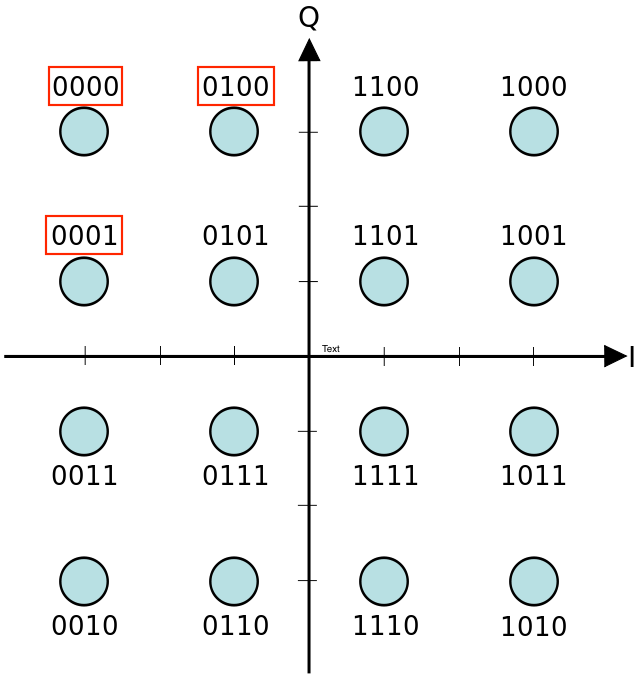The question is broadly about bit error rate, but to be concrete, I am asking it in context of 16-QAM.
Consider we have a rectangular 16-QAM modulation and also assume that we have grey coding. As I understand, grey coding is helpful because even if there is noise, we are off by just 1 bit.
Now, consider the symbols shown in red rectangle in the image below: '0000', '0001' and '0100'. If we incorrectly detect '0000' as '0001' or '0100', bit error is same as in both cases we are off by just 1 bit. However, if we incorrectly fall in '0001', error is tolerable as we are off by the least significant bit. On the other hand, if we fall in '0100', error should be worse as we are off by a higher significant bit.
To sum it up: do we take significance of bit into account while calculating bit error rate? If not, why is that?

